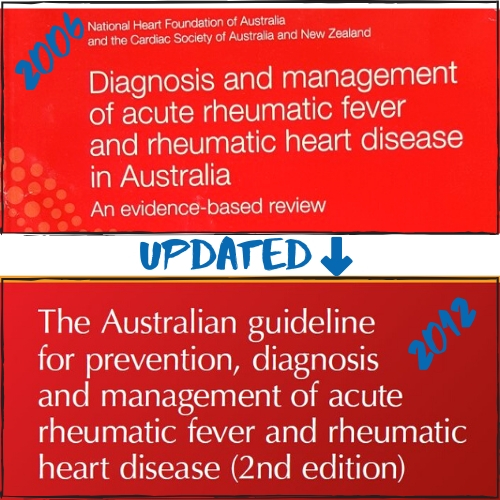National Guideline for Diagnosis and Management of ARF and RHD - A Review

RHDAustralia coordinates an assessment and review of the national guidelines for diagnosis and management of acute rheumatic fever and rheumatic heart disease in collaboration with the original publishers, which culminates in the publication of The Australian guideline for the prevention, diagnosis and management of acute rheumatic fever and rheumatic heart disease (2nd edition) in 2012. Writing for the 2nd edition is undertaken throughout 2011.
To support the review, a series of surveys are undertaken in 2010 to determine the use and usefulness of the first edition of the guidelines.
Surveys such as the one below are carried out while reviewing the 2006 guideline.
96 total respondents (including Medical Specialists, Medical Officers, Nurses, Dentists, Health Workers, Allied Health, Public Health & Researchers)
- Ready access to the guidelines 70%
- Hard copy 38%
- Electronic copy 32%
- Sections most commonly referenced
- Secondary Prevention/Prophylaxis 49%
- Diagnosis & Management of RHD 44%
- Diagnosis & Management of ARF 43%
- Information is generally useful/relevant 63%
- Preferred method for future access
- Electronic copy 58%
- Hard copy 45%
- Alternative mediums for presenting content
- Health orientation / training 61%
- Online tutorials 57%
- Incorporate into local guides 32%
In some regions the national guidelines is used to develop local protocols and so the national guideline document itself is not routinely used.
The first national guidelines for diagnosis and management of acute rheuamtic fever and rheumatic heart disease were published by the Heart Foundation and CSANZ in 2006.
RHDAustralia since 2009
Rheumatic Heart Disease Australia is an initiative of Menzies School of Health Research and is funded by the Commonwealth Government. Since 2009, RHDAustralia has been working with health professionals and alongside Aboriginal and Torres Strait Islander peoples, and other at risk populations, to reduce acute rheumatic fever and rheumatic heart disease in Australia.
